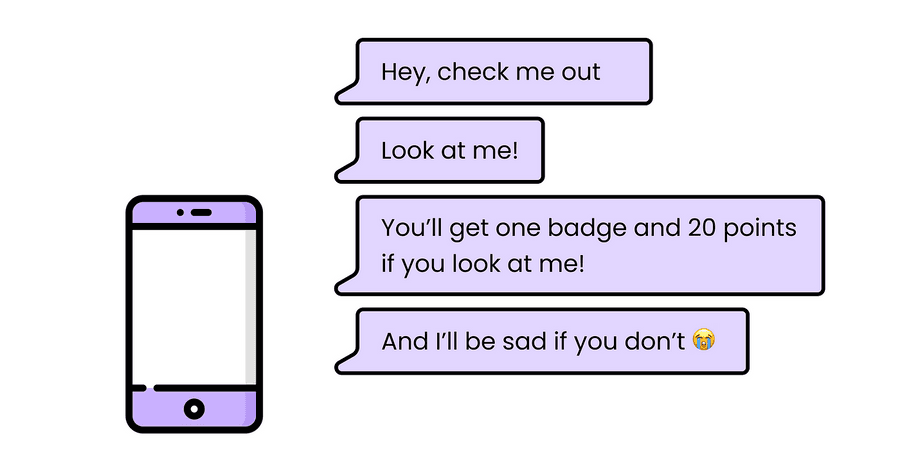Learn more about psychology with this collection
How to find inspiration in everyday life
How to stay motivated
How to cultivate a positive mindset
Internet Addiction Disorder
Unlike chemical addictions that may come to mind more easily, Internet Addiction Disorder (IAD) is not caused by a substance. It is part of behavioural addictions, along with gambling disorder, gaming disorder, and more. That doesn’t make it less serious, and it can still dramatically affect someone’s life.
Just like chemical addictions, Internet Addiction Disorder includes the following symptoms:
- Mood alteration
- Loss of control
- Pleasure derived from the addiction
- Withdrawal: anxiety and/or irritation when the person can’t access the Internet or their devices, cravings
20
267 reads
Key Factors Proving Addiction
There are several IAD tests that you can find online, but you can mostly tell addiction from bad habits with the following:
- One’s Internet use negatively affects other areas of their life, yet they keep at it
- They plan their life around their time online
- They can’t control their Internet use
17
231 reads
Persuasive and addictive design
Persuasive design is the technology that “changes” human behaviour. Ethics related to persuasion is about to what extent we may influence the behaviour and thoughts of our users.
How do we identify persuasive design? Here are some powerful questions to guide our assessment:
- What is motivating the use of a given design decision?
- Are users feeling pressured?
- Would they react differently if they better understood how the product works? If it was more transparent or straightforward?
- Would they then feel deceived?
18
88 reads
User Benefit
User benefit is an interesting dimension to look at, but it’s not a criterion to categorise a design pattern as non-persuasive or non-addictive. Resorting to persuasive mechanisms can be framed as being in the user’s best interest, and user benefit is subjective.
A dating app sending you 4 notifications per day to complete your profile is good for you, because it will help you attract the right people. Meditation app Headspace uses a daily streak feature, creating artificial pressure on users so that they meditate daily if they don’t want to lose their streak.
17
66 reads
Aligning To User Behaviour
Is the persuasion used to align user behaviour with goals that they themselves explicitly selected?
Let’s look at the recommendations YouTube makes after you finished watching a video.
What if, instead of pushing the video most people watched next — which can be harmful as recommendations promote more and more extreme videos — it pushed one from your own “Watch later” list?
The only form of ethical persuasion that exists in the world is when the goals of the persuaders are aligned with the goals of the persuadees(users).
18
55 reads
Design implications
Addictive design can bring a variety of burdens into someone’s life. An obvious one is spending more time online than they wanted to, but the drawbacks can also consist of FOMO (Fear Of Missing Out) and a sense of isolation, a drop in happiness levels, self-esteem and body image issues, dopamine dependency, and experiencing more outrage. Physiologically, addictive design can also lead to sleep issues and eye strain.
17
54 reads
Variable rewards
The variable rewards used by many online platforms keep us scrolling or returning to a product because they provide us with dopamine surges we get hooked on. For instance, displaying an image feed with very aesthetically pleasing items next to ones we’re indifferent to, or sending completely irrelevant notifications mixed with very enticing ones are ways to induce rewards variability. As it turns out, we experience these addictive rewards even more intensely when they come from mood-enhancing content, such as pornography, video games, dating platforms, social media, and gambling.
17
32 reads
Truthfulness In Scarcity and Urgency
You should only display that there is only 2 items left in stock, or only 4 hours left to participate in something, if it’s truthful and relevant.
Social media stories also create a sense of urgency: you have 24 hours to view them. The reduced friction (easily moving from one story to the next), induced FOMO, and variability of content are also addictive factors. If your product contains stories, you could downplay the ephemerality by extending their lifetime.
17
30 reads
Social proof and Authority
These can be used persuasively. Testimonials are useful, but some metrics don’t make any sense. Here are the “Top Rankings” from AliExpress, displaying the amount of followers a product has, the number of times it was ordered, and how many people have expressed interest in it. As you’ve noticed, none of these signs actually says anything about the quality of the item, or the satisfaction from people who purchased it. “3123 orders” and “605406 followers”
17
25 reads
Reciprocation
Do you remember when we didn’t have a “seen” icon in messaging apps? Good old times. Have you ever felt more pressure to reply because of it? Do you feel that you need to reply faster and not “leave them on read” (we use such a telling expression)? Does it stay on your mind until you do so?
17
27 reads
Technology-induced guilt or obligations
Obligations are often artificially created by streaks, that many platforms use, nudging people into visiting them daily. The bigger the commitment, the bigger the pressure: if you are to lose your streak, a 3-day one doesn’t take as long to rebuild as a 256-day one.
Contrary to reciprocation that we saw just above, this pattern doesn’t involve anyone on the other end of the line expecting a certain behaviour from you.
17
28 reads
Lack of friction
Inserting natural stops in the experience is a good way to avoid people being stuck in a ludic loop, which is an addictive pattern. You could use pagination instead of infinite scroll, or at least regularly verify with users whether they do want to keep scrolling. A few self-reflective check-ins:
- How well are you spending your time? (on a 5-point scale)
- Are you happy with what you are doing in this instant? (closed question)
- What is your current activity bringing you? (open question, adds more friction because it’s not binary, but gives a greater opportunity for introspection)
18
26 reads
Gamification
Gamification consists of incorporating game mechanics into non-gaming software. Its whole point is to ignite dopamine surges with frequent rewards.
Gamification is particularly bad when it looks like this:
- Created your account on the app? You get a badge for signing up!
- Took your first photo? Get 25 points!
- Published your first post? Woah, level-up!
17
29 reads
Interruptions
We’re all familiar with being caught up in an article and when a pop-in suddenly blocks our view and asks us to subscribe to a newsletter. And how about being stopped dead in our tracks to download an app when we’re using a mobile site, as Reddit does?
These nudging interruptions can be frustrating and confusing, and particularly so to people with anxiety. My immediate reaction is that I just want this thing out of my way, and while these are persuasive design patterns, I only experience them as annoying ones.
17
29 reads
CURATED BY
More like this
3 ideas
How To Break Your YouTube Addiction
medium.com
7 ideas
What is Web3? The Decentralized Internet of the Future Explained
freecodecamp.org
5 ideas
The psychology of shopping addiction
bigthink.com
Read & Learn
20x Faster
without
deepstash
with
deepstash
with
deepstash
Access to 200,000+ ideas
—
Access to the mobile app
—
Unlimited idea saving & library
—
—
Unlimited history
—
—
Unlimited listening to ideas
—
—
Downloading & offline access
—
—
Personalized recommendations
—
—
Supercharge your mind with one idea per day
Enter your email and spend 1 minute every day to learn something new.
I agree to receive email updates

